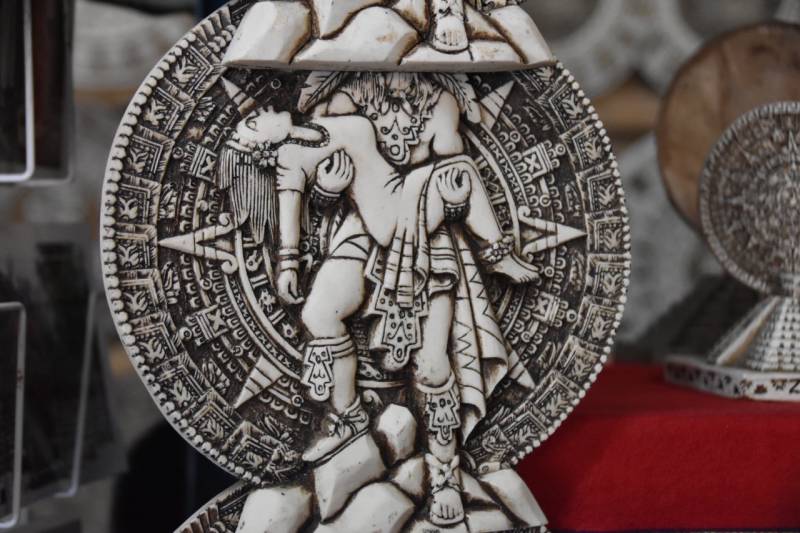
The Maya, situated in Mesoamerica, possessed one of the world’s greatest civilizations that lasted from the 3rdcentury to the 16th AD. Their legacy is rich in arts, architecture, mathematics, calendar and astronomy. Indeed, some of the Art Deco buildings constructed in the US in the 1920s and 1930s were
inspired by Mesoamerican architecture.
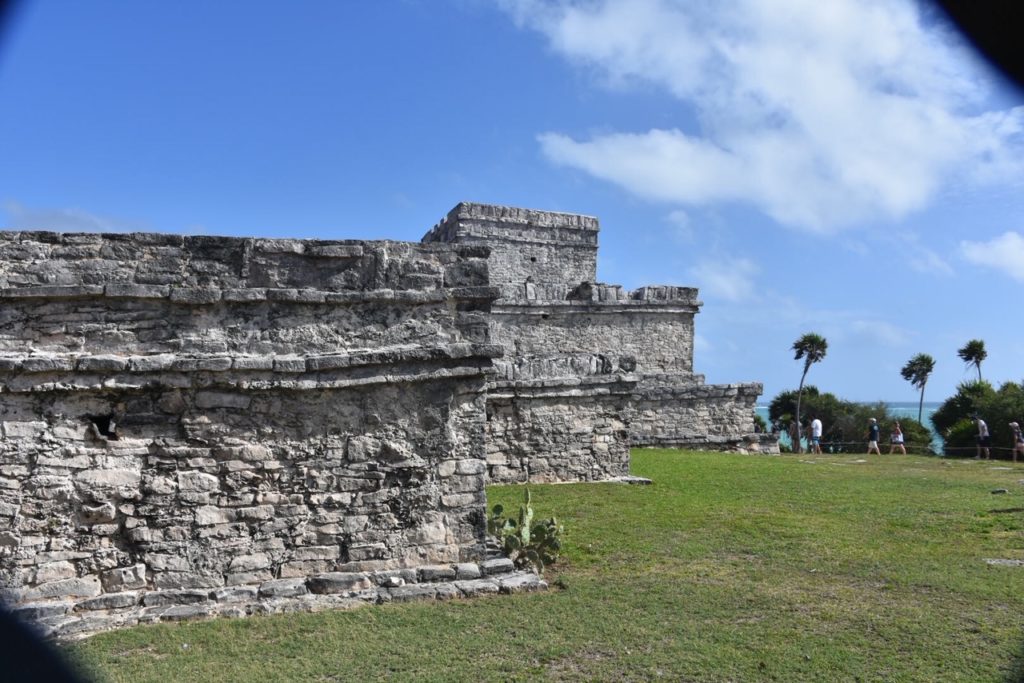 In the early centuries, the Maya were ruled by divine kings. Like most ancient cultures, they had their share of superstitions, most remarkably a fear of the planet Venus. The bright object which shone brightly in the evenings or the mornings, depending on the season, was considered dangerous. The Maya were advised to shield themselves from its “harmful” rays.
In the early centuries, the Maya were ruled by divine kings. Like most ancient cultures, they had their share of superstitions, most remarkably a fear of the planet Venus. The bright object which shone brightly in the evenings or the mornings, depending on the season, was considered dangerous. The Maya were advised to shield themselves from its “harmful” rays.
I did not know much about the Maya until 2006 I saw Gel Gibson’s “Apocalypto.” In the movie, the characters speak in the extinct Maya language and one follows the story through subtitles. The movie is cast as a spell-binding chase from beginning to end. It concludes with the arrival of the Spanish conquistadors.
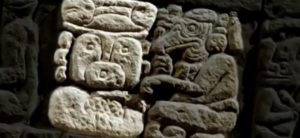 The movie showed a cultured civilization that built pyramids and stone buildings, had a very well organized system of life, but one that also sacrificed humans to the gods. This was the stuff that legends were made of. I just had to go and check out the ruins of the Maya.
The movie showed a cultured civilization that built pyramids and stone buildings, had a very well organized system of life, but one that also sacrificed humans to the gods. This was the stuff that legends were made of. I just had to go and check out the ruins of the Maya.
A couple of years ago, we took a six hour flight from San Francisco to reach Cancun on the Caribbean Sea. The town is famous for its beaches and world-class restaurants. Soon after our arrival, we booked a tour of the Maya archaeological sites.
What we saw was truly impressive. In particular, what stood out was the limestone pyramid at Chichen Itza, El Castillo de Kulkulcan. It was designed so the shadow of the sun on the sides of the pyramids would signal the changing of seasons. It stands 30 meters high. As one writer put it, “The play of late-afternoon light and shadow creates a moving serpent representing the serpent god Kulkulcan, that, over the course of 34 minutes, slithers down 365 steps to the giant’s head at the base of the pyramid’s principal facade before disappearing into the earth.”
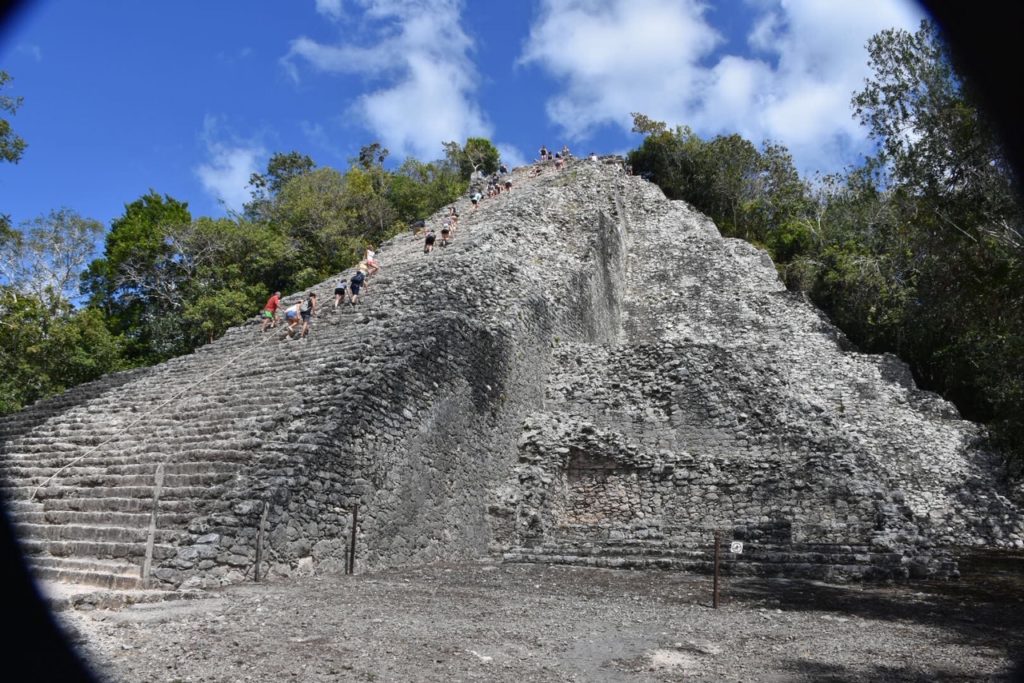
Unlike the pyramids of ancient Egypt, the Maya pyramids were not tombs but temples that looked up to the stars. Urban architecture distinguished religious structures from domestic structures, with the temples overlooking grand plazas. Certain buildings were also aligned with the positions of the stars during certain times of the year.
The town is also the location of the Great Ball court, which is the largest in Mesoamerica, measuring 83 meters long and 30 meters wide. Ball courts were a distinctive pan-Mesoamerican form of architecture.
The city is also home to the Temple of the Warriors. The ruins, flanked on two sides by dozens of columns, are impressive. The temple was a center for bloody sacrifices. The beating hearts carved out of the bodies of young victims were offered daily to the gods in exchange for sunrise.
I asked our tour guide whether he had seen Apocalypto. He smiled and said it had been a major source of tourist revenue for Cancun. I asked if the narrative was accurate and he said experts continue to debate its accuracy. During the tour, I discovered that the language of the Maya had been decoded in the middle of the 20th century.
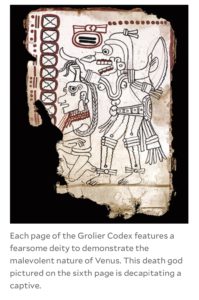
The Spanish, arriving in the 16th century, were hell bent on decimating Maya culture, which they believed to be idolatrous and devil worshipers. Locals resisting the Spanish were tortured and killed. But the barbarism of the invaders from the Old World did not stop there. A Spanish Friar, Diego de Landa, considered any bark-paper books written by the Maya as sacrilegious and had them destroyed. Only three books, known as Codex, have survived and they are preserved in Berlin, Dresden, and Paris.
The language of the ancient Egyptians who lived during the time of the pharaohs in the Bronze Age was decoded via the Rosetta stone, which can be found in the British Museum in London. The language of the Harappan civilization in the Indus Valley continues to be a mystery to this day.
So how was the language of the Maya decoded? That story is told in the book, “Breaking the Maya Code,” by the Yale anthropologist and archaeologist Michael D. Coe. It is also described in a National Geographic video.
Coe, who passed away last year aged 90, was one of the first scholars to grasp the importance of studying inscriptions on ceramic vessels that were found in the Maya ruins. Others had dismissed them as being strictly ornamental carvings or paintings. Coe found clear patterns in the inscriptions and that was the first breakthrough in the decipherment of the Maya language.
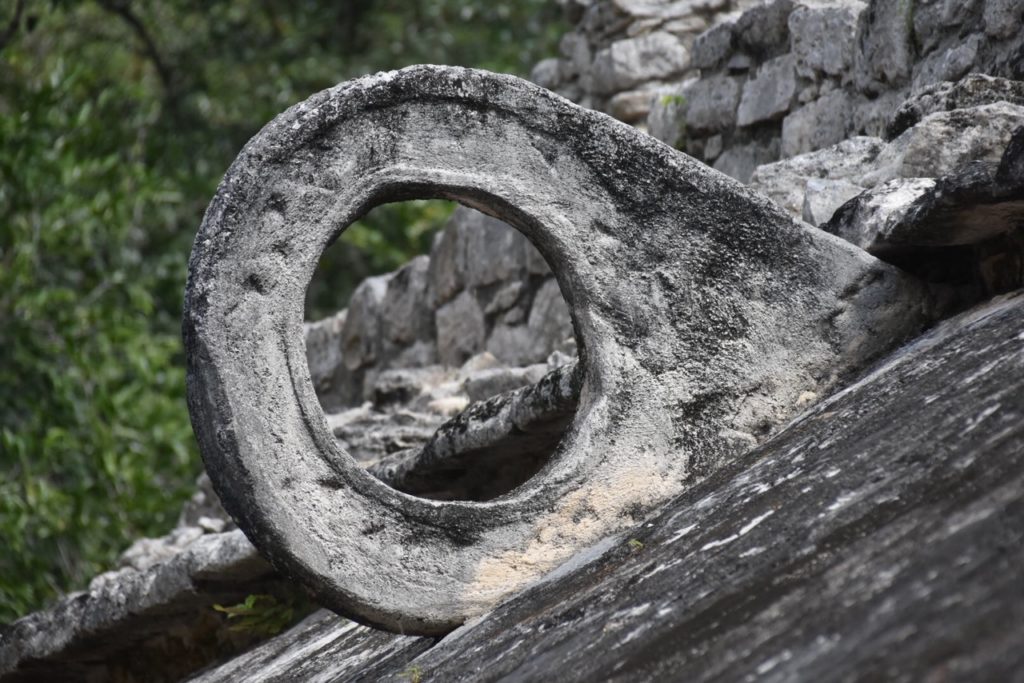 Coe states that much of the credit for deciphering the language of the Maya goes to Yuri Knorozov, a Soviet linguist and ethnographer. While serving in the Red Army that conquered Berlin at the end of the Second World War, he stumbled into a Maya manuscript. Knorozov began to study the glyphs in the manuscript and concluded they had phonetic qualities. Professor J.E.S. Thompson, who was the doyen of Maya scholars at the time, ridiculed the finding.
Coe states that much of the credit for deciphering the language of the Maya goes to Yuri Knorozov, a Soviet linguist and ethnographer. While serving in the Red Army that conquered Berlin at the end of the Second World War, he stumbled into a Maya manuscript. Knorozov began to study the glyphs in the manuscript and concluded they had phonetic qualities. Professor J.E.S. Thompson, who was the doyen of Maya scholars at the time, ridiculed the finding.
Coe says Knorozov was the first one to decode Maya glyphs. He said the symbols were phonetic, and not alphabetic, in nature. It so happened that Coe’s wife was the daughter of a Soviet-born evolutionary biologist. She enthusiastically translated many of Knorozov’s writings from Russian into English and his research soon garnered an international audience.
At first glance, Maya hieroglyphs seem like a baroque form of picture writing. The Maya used a script of animal heads, body parts, gods, and many other completely mysterious images, all arranged into blocks to make a text. The common wisdom for many decades held that the glyphs were nothing more than a cumbersome pictographic system in which each image represented a specific word or idea.
In 1952, Knorozov published a paper showing that the traditional view was utterly wrong. Maya writing was, in fact, a robust, phonetic script that used a combination of signs, each representing consonant-and-vowel syllables, to spell words. With that discovery, the door opened to understanding the history and culture of the Maya.
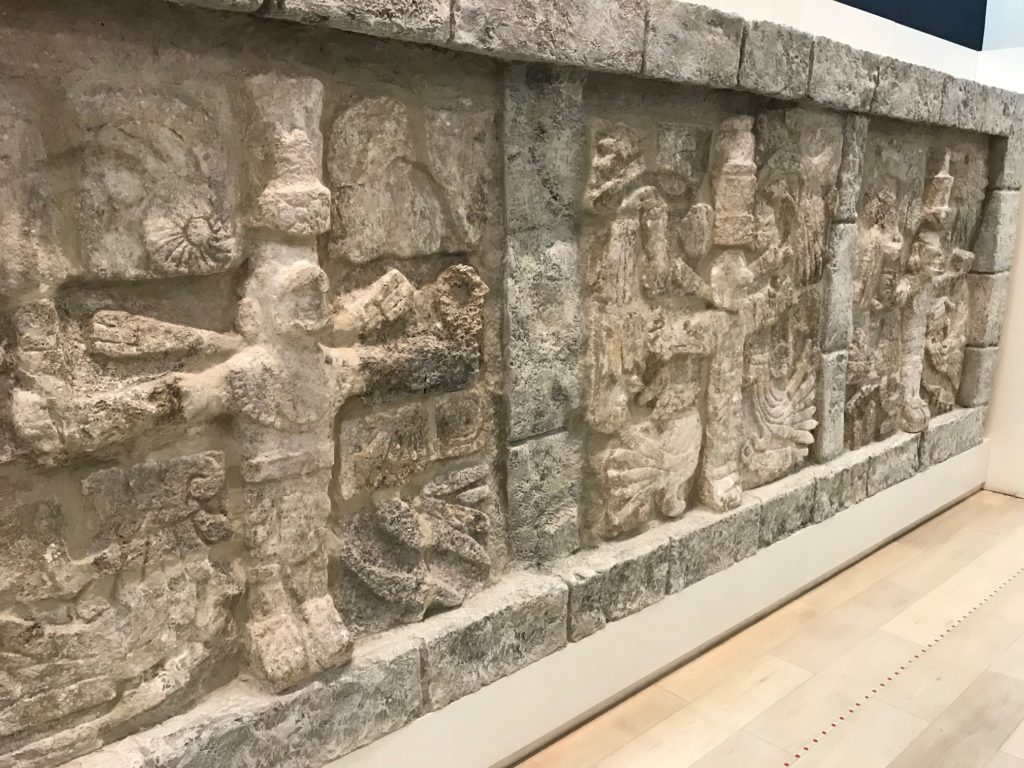 More papers and books were written and the richness of the Mesoamerica began to emerge, thanks to the efforts of American and Russian archaeologists. Some of the harm, but not all of the harm, caused by the Spanish invaders was reversed.
More papers and books were written and the richness of the Mesoamerica began to emerge, thanks to the efforts of American and Russian archaeologists. Some of the harm, but not all of the harm, caused by the Spanish invaders was reversed.
inspired by Mesoamerican architecture.
 In the early centuries, the Maya were ruled by divine kings. Like most ancient cultures, they had their share of superstitions, most remarkably a fear of the planet Venus. The bright object which shone brightly in the evenings or the mornings, depending on the season, was considered dangerous. The Maya were advised to shield themselves from its “harmful” rays.
In the early centuries, the Maya were ruled by divine kings. Like most ancient cultures, they had their share of superstitions, most remarkably a fear of the planet Venus. The bright object which shone brightly in the evenings or the mornings, depending on the season, was considered dangerous. The Maya were advised to shield themselves from its “harmful” rays.I did not know much about the Maya until 2006 I saw Gel Gibson’s “Apocalypto.” In the movie, the characters speak in the extinct Maya language and one follows the story through subtitles. The movie is cast as a spell-binding chase from beginning to end. It concludes with the arrival of the Spanish conquistadors.
 The movie showed a cultured civilization that built pyramids and stone buildings, had a very well organized system of life, but one that also sacrificed humans to the gods. This was the stuff that legends were made of. I just had to go and check out the ruins of the Maya.
The movie showed a cultured civilization that built pyramids and stone buildings, had a very well organized system of life, but one that also sacrificed humans to the gods. This was the stuff that legends were made of. I just had to go and check out the ruins of the Maya.A couple of years ago, we took a six hour flight from San Francisco to reach Cancun on the Caribbean Sea. The town is famous for its beaches and world-class restaurants. Soon after our arrival, we booked a tour of the Maya archaeological sites.
What we saw was truly impressive. In particular, what stood out was the limestone pyramid at Chichen Itza, El Castillo de Kulkulcan. It was designed so the shadow of the sun on the sides of the pyramids would signal the changing of seasons. It stands 30 meters high. As one writer put it, “The play of late-afternoon light and shadow creates a moving serpent representing the serpent god Kulkulcan, that, over the course of 34 minutes, slithers down 365 steps to the giant’s head at the base of the pyramid’s principal facade before disappearing into the earth.”

Unlike the pyramids of ancient Egypt, the Maya pyramids were not tombs but temples that looked up to the stars. Urban architecture distinguished religious structures from domestic structures, with the temples overlooking grand plazas. Certain buildings were also aligned with the positions of the stars during certain times of the year.
The town is also the location of the Great Ball court, which is the largest in Mesoamerica, measuring 83 meters long and 30 meters wide. Ball courts were a distinctive pan-Mesoamerican form of architecture.
The city is also home to the Temple of the Warriors. The ruins, flanked on two sides by dozens of columns, are impressive. The temple was a center for bloody sacrifices. The beating hearts carved out of the bodies of young victims were offered daily to the gods in exchange for sunrise.
I asked our tour guide whether he had seen Apocalypto. He smiled and said it had been a major source of tourist revenue for Cancun. I asked if the narrative was accurate and he said experts continue to debate its accuracy. During the tour, I discovered that the language of the Maya had been decoded in the middle of the 20th century.

The Spanish, arriving in the 16th century, were hell bent on decimating Maya culture, which they believed to be idolatrous and devil worshipers. Locals resisting the Spanish were tortured and killed. But the barbarism of the invaders from the Old World did not stop there. A Spanish Friar, Diego de Landa, considered any bark-paper books written by the Maya as sacrilegious and had them destroyed. Only three books, known as Codex, have survived and they are preserved in Berlin, Dresden, and Paris.
The language of the ancient Egyptians who lived during the time of the pharaohs in the Bronze Age was decoded via the Rosetta stone, which can be found in the British Museum in London. The language of the Harappan civilization in the Indus Valley continues to be a mystery to this day.
So how was the language of the Maya decoded? That story is told in the book, “Breaking the Maya Code,” by the Yale anthropologist and archaeologist Michael D. Coe. It is also described in a National Geographic video.
Coe, who passed away last year aged 90, was one of the first scholars to grasp the importance of studying inscriptions on ceramic vessels that were found in the Maya ruins. Others had dismissed them as being strictly ornamental carvings or paintings. Coe found clear patterns in the inscriptions and that was the first breakthrough in the decipherment of the Maya language.
 Coe states that much of the credit for deciphering the language of the Maya goes to Yuri Knorozov, a Soviet linguist and ethnographer. While serving in the Red Army that conquered Berlin at the end of the Second World War, he stumbled into a Maya manuscript. Knorozov began to study the glyphs in the manuscript and concluded they had phonetic qualities. Professor J.E.S. Thompson, who was the doyen of Maya scholars at the time, ridiculed the finding.
Coe states that much of the credit for deciphering the language of the Maya goes to Yuri Knorozov, a Soviet linguist and ethnographer. While serving in the Red Army that conquered Berlin at the end of the Second World War, he stumbled into a Maya manuscript. Knorozov began to study the glyphs in the manuscript and concluded they had phonetic qualities. Professor J.E.S. Thompson, who was the doyen of Maya scholars at the time, ridiculed the finding.Coe says Knorozov was the first one to decode Maya glyphs. He said the symbols were phonetic, and not alphabetic, in nature. It so happened that Coe’s wife was the daughter of a Soviet-born evolutionary biologist. She enthusiastically translated many of Knorozov’s writings from Russian into English and his research soon garnered an international audience.
At first glance, Maya hieroglyphs seem like a baroque form of picture writing. The Maya used a script of animal heads, body parts, gods, and many other completely mysterious images, all arranged into blocks to make a text. The common wisdom for many decades held that the glyphs were nothing more than a cumbersome pictographic system in which each image represented a specific word or idea.
In 1952, Knorozov published a paper showing that the traditional view was utterly wrong. Maya writing was, in fact, a robust, phonetic script that used a combination of signs, each representing consonant-and-vowel syllables, to spell words. With that discovery, the door opened to understanding the history and culture of the Maya.
 More papers and books were written and the richness of the Mesoamerica began to emerge, thanks to the efforts of American and Russian archaeologists. Some of the harm, but not all of the harm, caused by the Spanish invaders was reversed.
More papers and books were written and the richness of the Mesoamerica began to emerge, thanks to the efforts of American and Russian archaeologists. Some of the harm, but not all of the harm, caused by the Spanish invaders was reversed. 